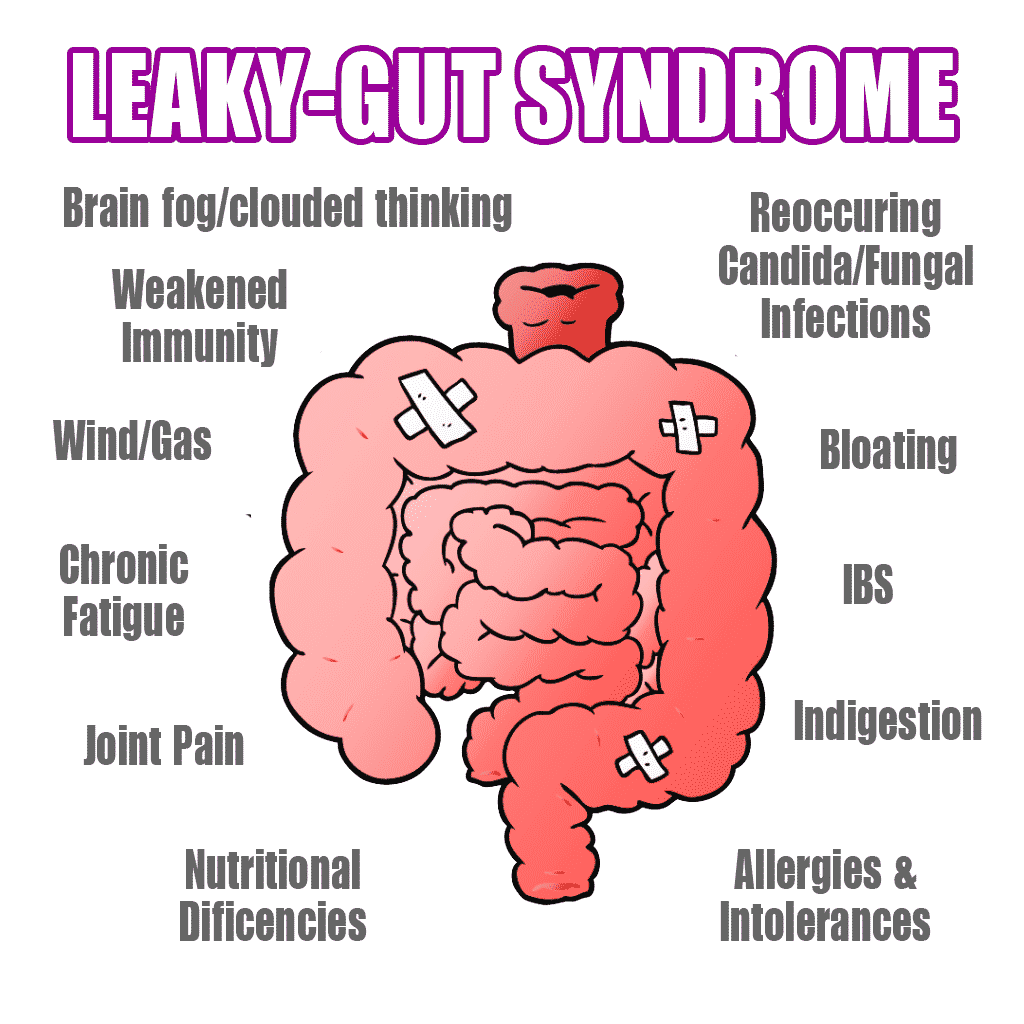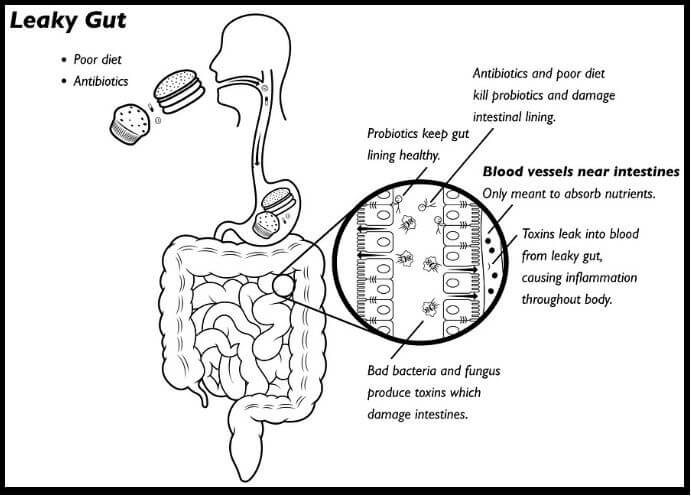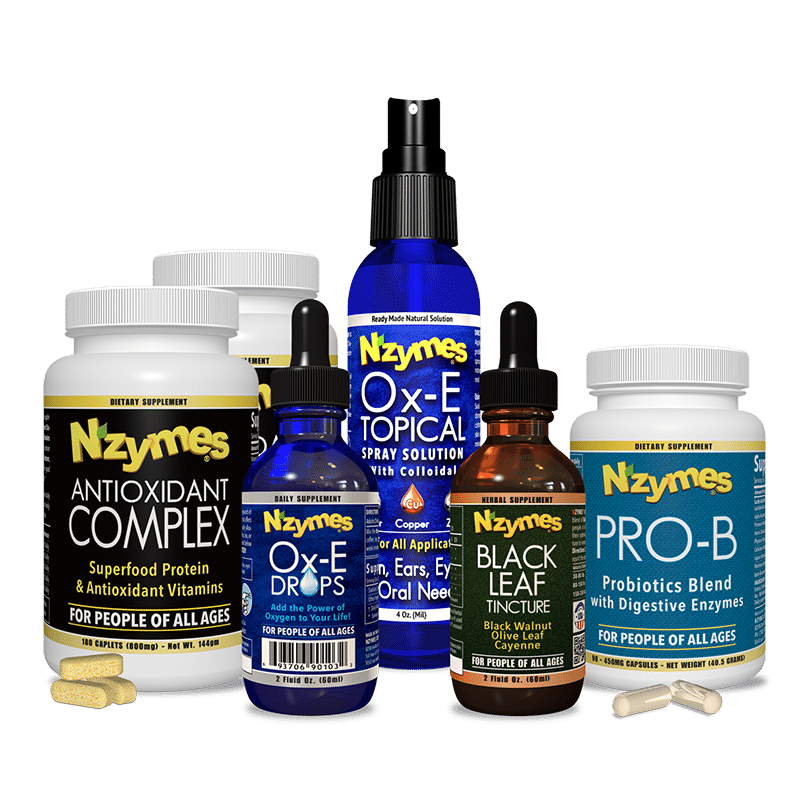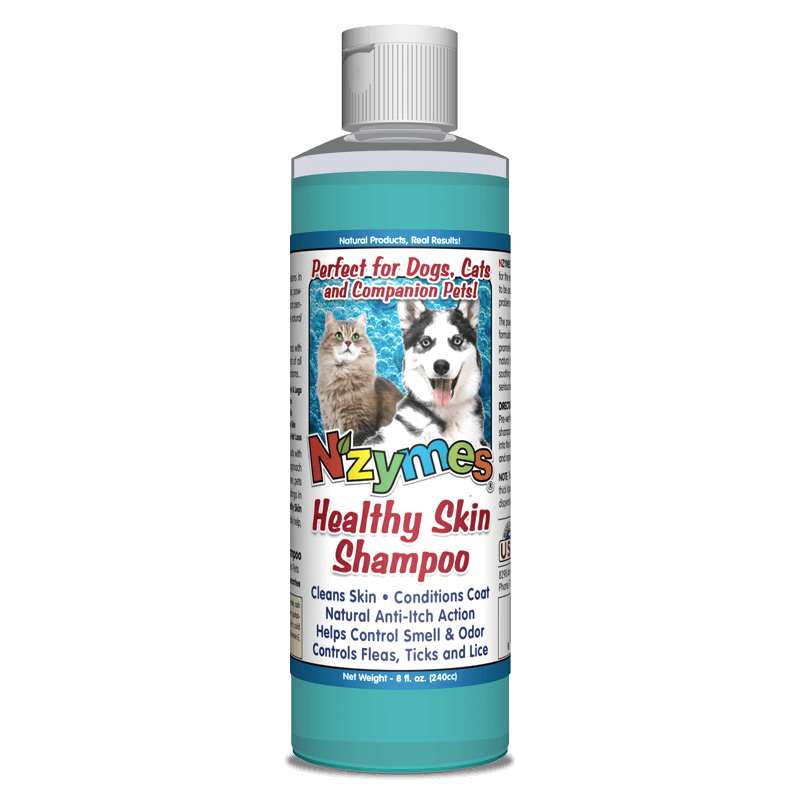Leaky Gut Syndrome and the Yeast connection
Definition: A gastrointestinal condition commonly known as Leaky Gut Syndrome, or clinically referred to as Increased Intestinal Permeability.
Leaky-gut Syndrome is a very common (often un-diagnosed) condition in which the lining of the small intestine becomes inflamed. This inflammation can be caused by many different things, including the following:
- Alcohol and/or drinks containing caffeine.
- Overuse of antibiotics damaging the “good” bacteria in the gut.
- Foods contaminated with certain bacteria or parasites.
- Corticosteroids, such as prednisone, and/or non-steroidal anti-inflammatory drugs (NSAIDs) like aspirin or ibuprofen.
- Consumption of large quantities of highly refined carbohydrates, (sugar and processed flour).

Inflammation causes damage to the tissue, resulting in excess permeability and unusually large spaces between the cells of the mucosal lining, which allows bacteria, viruses, fungi, and other potentially toxic materials to enter the bloodstream. The widened spaces can also allow undigested food particles to “leak” through the intestinal lining. This could pose a serious health risk since these particles may be considered “foreign” by the body and the immune system may try to destroy them.
It is the destruction of the “good” bacteria that leaves the surface of the small intestine unprotected and subject to inflammation. In addition, an unfriendly, fungal organism known as Candida Albicans (yeast) readily expands into the area vacated by the beneficial flora.

From: MCS-IMMUNE-NEURO MCS/Chemical Injury Support on behalf of Andi DesJardins
July 1997 Week4
The Natural Way February 1997
Invasion of the Body Snatchers
by Karta Purkh Singh Khalsa
Candidiasis typically progresses in a very systematic way. The symptoms escalate in four stages. First, imbalances begin in the digestive tract. As the Candida begins to dominate the intestinal environment, people develop characteristic symptoms such as heartburn, gas, bloating, anal itching, and vaginitis. As body defenses weaken, Candida and other fungi can infect other body areas, causing athlete’s foot, jock itch, skin and nail infections.
Although yeast cannot invade bodily tissue directly the way bacteria and viruses can, like other fungi, it produces root-like structures that penetrate the lining of the gut. This damage provides a site for incompletely digested dietary proteins to enter the bloodstream. The body sees these proteins as antigens and responds by developing an allergic reaction to that particular food. Candida sufferers are plagued by multiple food sensitivities, a condition that creates a vicious circle of immune suppression, further Candida and allergy.
As Candidiasis progresses, yeast cells attach themselves to mucous membrane surfaces, form a colony, and transform into a fuzzy “mycelium” (think mold on bread). As their roots penetrate the tissues, searching for nutrients, the yeast produces toxins that damage the tissue and cause inflammation. Any tissue that has been colonized by the yeast will be plagued with symptoms—vaginitis, diarrhea, heartburn, or “thrush” (yeast in the mouth). Yeast cells can also show up in the sinuses, ears, and eyes.
As the toxic byproducts of a yeast infection circulate through the bloodstream, they can trigger symptoms in distant parts of the body. This tissue upset can result in conditions as diverse as asthma, sinusitis, lupus, PMS, and kidney stones, according to Dr. Ralph Golan, writing in Optimal Wellness. Symptoms depend on which organ has been affected by the toxins. Damage to the brain can cause fuzzy thinking, while skin damage will cause itching and rashes.
As the immune system becomes compromised, the body becomes hypersensitive to otherwise benign levels of such common chemicals as gas fumes, perfume, and pesticides.
The yeast-damaged body becomes so overwhelmed that it can produce antibodies against its own tissues, causing conditions like severe PMS. Along with classic allergy symptoms like hay fever and hives, as the sufferer becomes more allergic and chemically sensitive, he/ she can develop reactions including a headache, joint pain, and nausea.
The third set of symptoms occurs when a yeast infection involves the central nervous system, and mental symptoms such as a headache, irritability, confusion, and lethargy begin. Finally, in an advanced case of candidiasis, the body develops symptoms of organ and hormone dysfunction. The most common of these is hypothyroidism, followed by adrenal failure, but any organ can be involved. In children, the symptoms usually start with chronic ear infections and colic.
What Triggers The Invasion?
Candida truly is a disease of modern life. All of the factors that aggravate yeast overgrowth are consequences of modern living. Healthy people do not get yeast infections.
Yeast overgrows for two reasons: Something feeds it or something suppresses the immune system, rendering the body incapable of controlling it.
Antibiotics are thought to be the single greatest contributor to Candida. True, antibiotics kill unwanted bacteria, such as those that cause teenage acne, but they also non-selectively kill the good bacteria in the digestive tract and vagina, allowing the antibiotic-resistant Candida Albicans to flourish. Women often develop vaginal yeast infections after using antibiotics and frequently trace their first onset of Candidiasis to a potent course of antibiotics, often years before. Once Candidiasis develops and the gut is overgrown with yeast, the body’s colony of beneficial bacteria cannot be reestablished without treatment.
Yeast also loves sugar. Remember, yeast is used to ferment sugar in bread and beer. White sugar, especially, is the perfect yeast food. It also suppresses the immune response, which increases the likelihood that a yeast infection will spread. Sugar is not the only dietary culprit: All carbohydrates feed the yeast to a certain extent and can contribute to episodes of symptoms.
Women are more at risk for this yeast syndrome, at least during their fertile years. Progesterone, produced in abundance prior to menstruation, favors yeast, and many pre-menstrual women see an increase in their yeast symptoms. Progesterone is a principal ingredient in oral contraceptives, which, not surprisingly, provokes yeast. When the body is in balance, taking oral contraceptives shouldn’t cause significant yeast problems, but when Candida is out of control, birth control pills can be a serious complicating factor.
During pregnancy, women develop higher blood sugar and higher progesterone. What could be better for yeast? In fact, many women trace the onset of their symptoms to their first pregnancy.
Finally, of course, women have a vagina – a perfectly dark, moist, warm cavity for the yeast to call home. A recent study showed that women with vaginal Candidiasis had one-sixth of the normal level of beta-carotene in the cells of the vagina. Reduced levels of beta-carotene, a recognized immune-enhancing antioxidant, suggest suppressed immunity in those tissues, leaving them more susceptible to vaginal yeast.
It is virtually impossible to have a yeast or fungus infection in just one small area, such as the vagina. Fungi and yeast only need dark, warm, and moist conditions to become opportunistic. Our bodies have literally a multitude of other dark, warm, and moist locations. People who have been adequately treated with prescription drugs for fungi often find that have less itching in their ears, that their sinus problems clear up, and that various body rashes disappear. While those are external benefits to antifungals, internally, they often find that they breathe easier, asthma-like symptoms disappear, thrush evaporates, and their IBS is no longer a problem.
One of the main reasons for us to have fungal problems is that we have been found to lower NK cells. NK cells are among the first line of the immune system’s defense to ward off opportunistic infections. While alternative medicine practitioners know and treat this problem, it is only the nationally-recognized CFS, FM, MCS, and Lyme-literate doctors who address these issues. Attempting to obtain appropriate and adequate antifungal treatment from one’s HMO or regular Internist is almost a lost cause, despite the overwhelming research that proves its reality.
Numerous other circumstances favor yeast development. Incomplete digestion of carbohydrates, especially when combined with diarrhea, brings food to the yeast that inhabits the large intestine. A number of drugs, especially cortisone, encourage the growth of yeast, as does exposure to damaging amounts of environmental chemicals, such as pesticides. Allergies, glandular disorders from any source (including diabetes), and trauma (such as surgery) also contribute to Candidiasis.
Clearly, none of these factors alone causes yeast disorder, which is what makes the condition so elusive. To treat the problem successfully once the yeast has gotten firmly established, you must “search and destroy” each of Candida’s building blocks one by one.
The Counter-Attack
Candida can be controlled with a multi-pronged approach aimed at normalizing and strengthening immune function, killing yeast in the digestive tract (and other areas it has colonized), replacing beneficial flora in the intestines, and stabilizing the nutritional status of the body as a whole.
Diet. Eat whole foods that nourish you–not the yeast. You knew all along I was going to say it: No Sugar. The more you minimize simple carbohydrates in favor of complex carbohydrates, the better. Most people need to eliminate fruit for a period of time, and some can’t even tolerate high-starch vegetables like potatoes.
Essentially, the diet that starves yeast while supporting the immune system avoids sweets, refined flours, and all allergy-producing and mold-containing foods (if sensitive to them). Such a diet includes adequate protein, a lot of fresh vegetables, complex carbohydrates appropriate to the case, and moderate fat and fruit only as tolerated.
Food cravings can be a big problem on an anti-yeast diet. When full of yeast, people feel a tremendous pressure to feed the fungus with sugar. Dr. Crook likens eating sugar in these circumstances to throwing kerosene on a fire. For cravings, he recommends protein, such as raw nuts or baked tofu. Ironically, when people have multiple food allergies, they are often addicted to the very foods that produce the allergic reactions and have classic withdrawal cravings without those foods.
Supplements. Many natural medicines work well to control yeast. One of the most important is “friendly flora,” the lactobacilli that belong in the gut. Because the yeast has colonized the membranes of the intestines, large doses of lactobacilli are necessary to overpower the Candida and replace its colonies. Use powdered acidophilus from the refrigerator case. A typical dose is two tablespoons per day for two weeks. In addition, you can use five mg of biotin per day or try Caprylic acid (begin with 200 to 300 mg a day, working up to 6,000 mg a day after two to three weeks).
Herbs. Many herbs act as antifungals. Basically, we can separate them into those that kill yeast directly and those that control it by supporting the immune system over time. Some do both.
Getting control of yeast requires a holistic approach to your total lifestyle. The world—and our bodies with it—is covered with yeast, and you will never be able to kill enough of the fungus to escape it. Only by adjusting your diet, de-stressing your lifestyle, and supporting your immune system can you conquer Candida. For this whole-person problem, with a little discipline, you will find a whole-person solution.
Yeast Risk Factor — Antibiotics, oral contraceptives, pregnancy, cortisone, and other immunosuppressant drugs, sugar, high-fat high-sugar nutrient-poor diets, environmental chemicals, chemotherapy and radiation treatments, allergy-producing foods, malabsorption of nutrients, chronic diarrhea, chronic viral infections, anti-inflammatory drugs, ulcer medication or acid blockers/antacids used for prolonged periods, emotional trauma.
Indulge — Fresh lemon, fresh lime, most vegetable juices except carrot and beet, most vegetables, fresh garlic, fresh ginger
Avoid — Fruit, potatoes, mushrooms, tomatoes, ketchup, all alcoholic beverages, chocolate, coffee, dried-herb teas, milk, vinegar
________________________________________________________________________________
How Nzymes can Help
Steps to a life free of yeast.
Combating a Systemic Yeast Infection in one’s own body can present one of the most challenging events in a lifetime. Successfully overcoming a Systemic Yeast Infection – Leaky Gut Syndrome is no simple task but can be accomplished over time by following a carefully laid-out strategy. One of the most important keys to winning this battle is knowing your enemy – that is understanding exactly what it is you’re up against, what it takes to defeat it, and how all the steps you are taking are playing a vital role in your success.
There are no “quick fixes” when dealing with an SYI. Many times, it is the quick fixes offered by the medical community – Antibiotics, Immune suppressants, Anti-depressants, etc. – aimed only at addressing the symptoms of an SYI, that further complicate the underlying problem. Instead, the only way to truly resolve the issue is to address the root of the problem. The overgrowth of Yeast is taking place in the GI Tract, and that is where the focus of your attention must be placed.
The Nzymes 4-Part Approach to Combating Candidiasis (Yeast)
- 1> Address the Fungal problem. Yeast is an unrelenting fungal organism. Since it will not retreat on its own, it must be forced out. This requires the use of substances that naturally assist the body’s struggle with maintaining a good pH balance, which is inhospitable for yeast. Nzymes® Ox-E-Drops is quite useful in the fight against this fungal organism.
- 2> Use of Antioxidants. Antioxidants are instrumental in supporting many bodily systems through healing, repair, and detoxification processes. The Live food nutrition found in Nzymes® Antioxidant Complex provides key nutrients enabling the greater production of antioxidant enzymes.
- 3> Use of Probiotics. Systemic Yeast gets its start from a breakdown of the natural Bacterial Flora. With the walls unprotected, yeast colonies are free to thrive. It is essential to rebuilding your natural, bacterial flora in order to re-balance the GI tract and to gain the upper hand on Leaky Gut Syndrome. Nzymes® Pro-B is a combination Digestive Enzyme/Probiotic supplement that is micro-encapsulated to ensure greater delivery of the area in need – the intestinal lining.
- 4> Dietary Adjustment. As fully discussed above, yeast thrives on sugars and simple starches. It is essential to support your body with a healthy diet. It is said that “Americans are largely over-fed and undernourished”. There is no substitute for a well-balanced diet. Supplements certainly have their place, but each day you replenish your body by what you put into it.
Lastly, this approach is no “Magic Bullet”. It requires a mindset with a great deal of stick-to-it-ism! One inescapable part of going through a yeast “cleanse” is facing the die-off or “Herxheimer Effect”. This is a kind of “worse before better” scenario that every yeast sufferer goes through to varying degrees. You will be tempted to give up 100 times a day. But where will you go? Back for more dead-end, symptom-aimed therapies?
The important thing is to understand that this is a long journey and that you are taking steps that you are ready to handle. Celebrate your milestones as accomplishments. You can do this! Just choose a path that YOU can do. When you are ready to take on more, that’s when you are ready to step up your game.



